Using your shop’s Cost of Doing Business (CODB) as a baseline for labor rates.
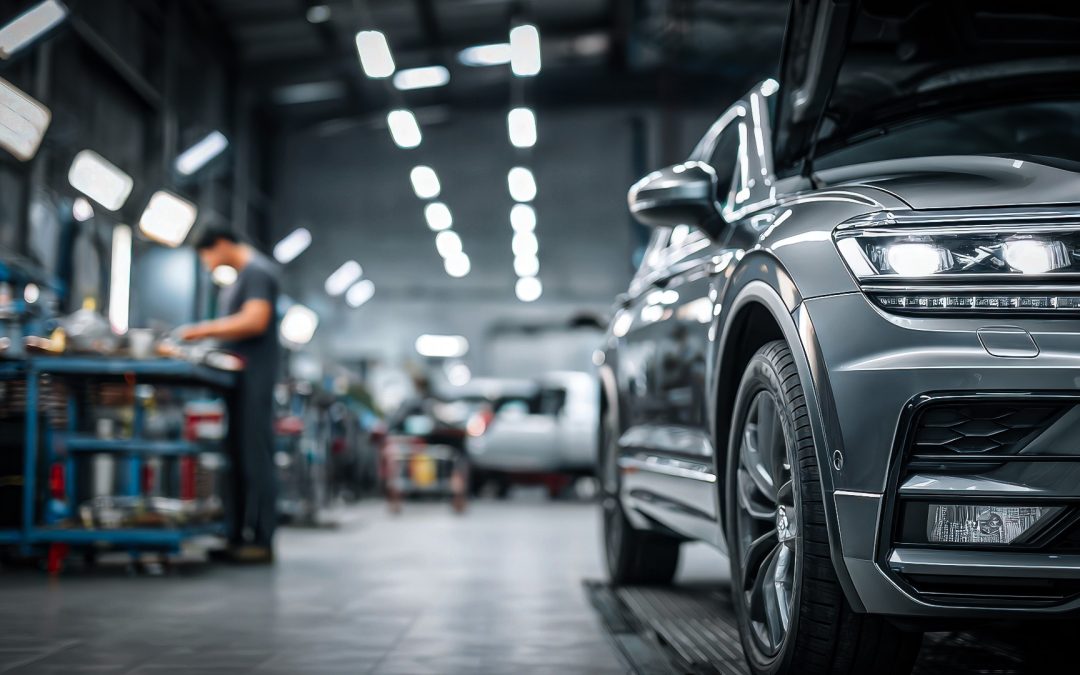
The U.S. presidential state car (aka “The Beast”, “Cadillac One”, “First Car”, and codename “Stagecoach”) is an unmistakable symbol of our nation’s executive branch. Since we had a presidential inauguration this year, I thought it would be a good time to look at the history of the U.S. presidential state car. Much of the information for this piece came from the book “Presidential Cars & Transportation” by Andrea Stewart and William D. Siuru which, although published in 1995, has a lot of great information on presidential transportation up to that time.
Although presidents had ridden in cars as early as the start of the 20th century (President William McKinley briefly rode in a Stanley Motor Carriage Company steam car in 1901), it wasn’t until the presidency of William H. Taft that the president had his own fleet. The Secret Service had purchased a 1907 White Motor Company steam car to follow President Theodore Roosevelt’s horse-drawn carriage. However, Roosevelt avoided riding in the vehicle due to his image as a rough-riding equestrian, saying, “I came to the inauguration in this horse-drawn vehicle and I will leave in it.”
Taft had a different attitude, though, converting the stables at the White House to a garage in 1909 and buying four cars for presidential use. Those four cars consisted of a 1911 White Motor Company Model “M” steam car, two Pierce-Arrow limousines, and a Baker Victoria Phaeton Electric. Taft particularly enjoyed the steam car, as when he didn’t want to answer reporters’ questions, he’d have his chauffeur release a cloud of steam to make his escape.
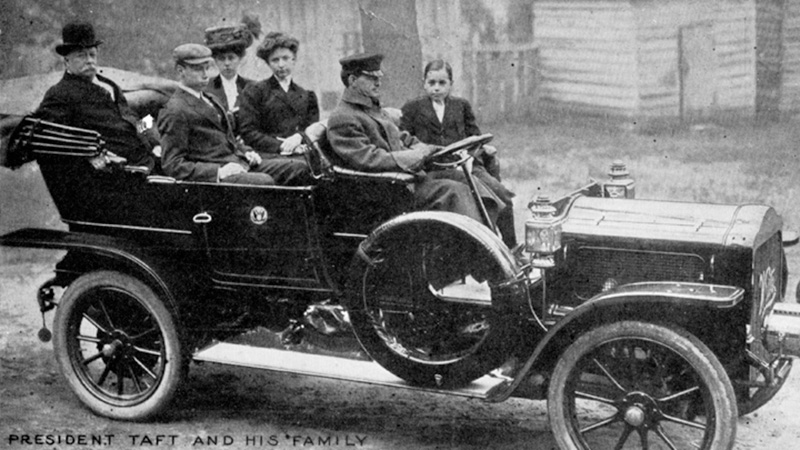
By 1916, the White House was shopping for some updated wheels and bought three new Pierce-Arrow cars: two Model A4-66 touring cars and a 1916 Model 48 vestibule sedan during Woodrow Wilson’s presidency. The vestibule sedan was used as the president’s limousine, while the first family and presidential secretary rode in the tourers. President Wilson was such a fan of the Model 48 that he bought it from the government and used it as his personal car after he left office.

The next major upgrade for the presidential fleet came during the presidency of Calvin Coolidge, who struck a deal with the Pierce-Arrow Company to lease at a reduced cost, not buy, five cars for the White House, including a 1921 Pierce-Arrow seven-passenger limousine. This began the tradition of auto companies supplying presidential cars virtually for free. Coolidge was later the first president to purchase a Lincoln presidential limousine, a 1924 Lincoln Model L.
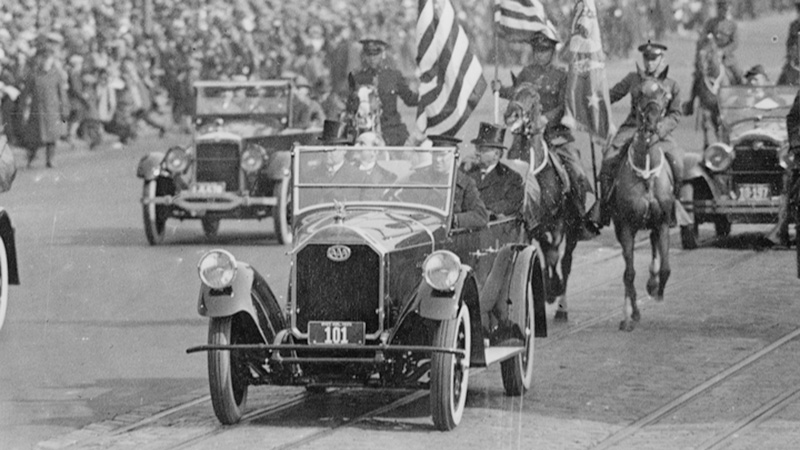
The first modern presidential limo arrived during the presidency of Franklin D. Roosevelt, as his 1939 Lincoln Model K, known as the “Sunshine Special,” was the first presidential vehicle whose design was dictated by the Secret Service. Before this, presidential vehicles were delivered pretty much stock. This change to safer executive vehicles is likely due to the fact that three American presidents had been assassinated in the previous 75 years (Lincoln, Garfield, and McKinley), plus an unsuccessful assassination attempt on FDR in 1933.
Two sets of changes were made to the “Sunshine Special.” Due to aesthetic considerations, the top of the automobile was lowered by three inches in 1941. Inch-thick cabin armor, flat-proof inner tubes, a radio transceiver, a siren, red warning lights, and a submachine gun compartment were added to the automobile in 1942, following the attack on Pearl Harbor. After the second set of modifications, the car weighed 9,300 pounds and was six feet longer.
In addition to the famous Model K, there were Packards in the presidential fleet during FDR’s presidency. They included an armored 1939 Packard Twin-Six convertible sedan, a phaeton, a sedan limousine, a convertible sedan, a Super Eight touring limousine, and a Super LeBaron touring limousine.
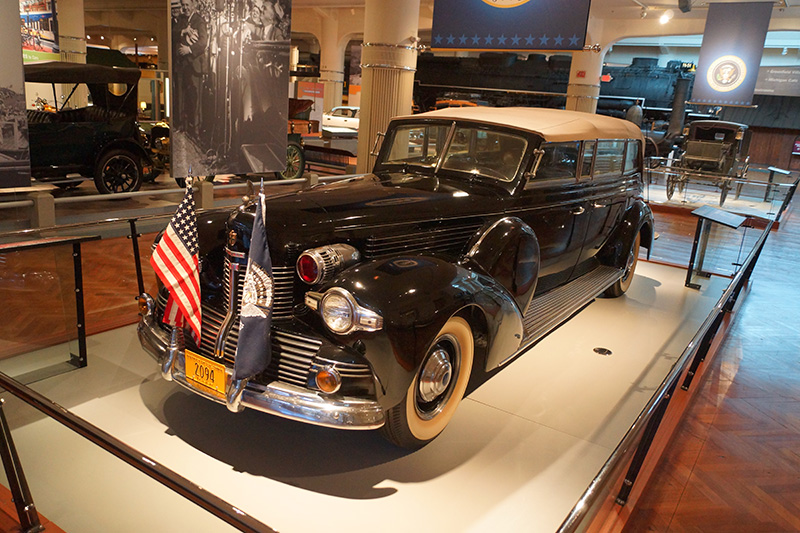
Upon FDR’s death, Harry S. Truman not only took over the Oval Office, but also use of the “Sunshine Special.” Soon, Truman would build a presidential fleet of Lincolns. Truman had a preference for Lincolns and a disdain for General Motors, after they declined the Secret Service’s request for their cars during his run for the 1948 presidential election. As such, GM cars were conspicuously absent from the presidential fleet in the Truman years.
However, the White House leased ten 1949 and 1950 Lincoln Cosmopolitans that became known as the “Truman Lincolns,” The vehicles were painted black and equipped with security measures and more headroom. The tenth vehicle was an armored convertible built specifically for President Truman, whereas the other nine had enclosed bodywork. With dimensions of 20 feet by 6.5 feet and a weight of 6,500 pounds, the tenth Cosmopolitan was 1,700 pounds heavier than a standard model. Each of the 10 vehicles was equipped with a V8 that produced 152 horsepower and a heavy-duty Hydra-Matic transmission. The convertible would eventually be designated USSS, for United States Secret Service.
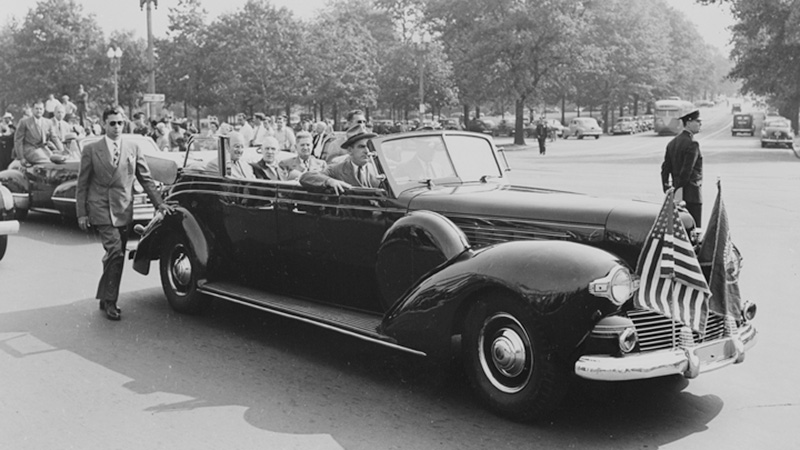
President Dwight Eisenhower continued to use the Lincoln Cosmopolitan convertible (in fact, it served well into the Kennedy administration). However, Eisenhower did not share his predecessor’s contempt for GM, as he led his Inauguration Day Parade in a 1953 Cadillac Eldorado convertible. As a president who liked to see and be seen by parade crowds, Eisenhower did make a noticeable change to the Cosmopolitan convertible in 1954, adding a clear canopy roof to it that allowed the public to see him even in bad weather (although it provided virtually no armored protection). Thus, the Lincoln Cosmopolitan convertible came to be known as the “Bubbletop.” When Eisenhower entered the White House, the presidential fleet consisted of about 25 cars, including the Truman Lincolns, a 1953 Cadillac Series 75 limo, two Packard limos, and several Mercury four-door sedans.
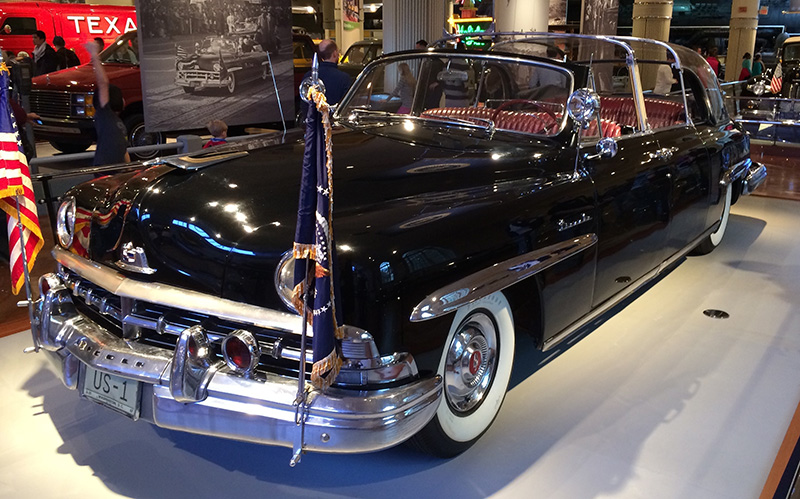
Although the Lincoln Continental is now inextricably linked to President Kennedy, he was not actually a Lincoln enthusiast. However, since Ford provided so many cars to the White House fleet at the time, Kennedy was often seen riding in early 1960s Lincoln Continentals.
Work on a replacement to the “Bubbletop” began the day before JFK’s inauguration. The new ride was a 1961 Lincoln Continental codenamed X100, which started life as a standard production car. After leasing it from the Ford Motor Company for $500 a year, the federal government hired coachbuilder Hess & Eisenhardt to alter it for the president, which came with a $200,000 price tag. To make room for a center row of folding jump seats that faced front, the automobile was extended by 3.5 feet.
In addition to retractable standing platforms and handles for Secret Service personnel, the exterior included flashing red lights integrated into the bumper. Unique to the X100 were a variety of detachable roofs and a hydraulic lift that raised the rear seat by 10.5 inches. Tragically, it was this car that Kennedy was assassinated in, leading to him being associated with Lincoln Continentals.

The operation that reconstructed the Continental following Kennedy’s assassination was dubbed “The Quick Fix.” Ford engineers, PPG Industries, the Secret Service, the U.S. Army Materials and Mechanics Research Center, and Hess & Eisenhardt collaborated to strip the limousine and make major changes. To prevent “ghoulish collectors” from getting their hands on the abandoned auto components, they were destroyed. The estimated $500,000 cost included painting the car black, upgrading its telecommunications equipment, adding 1,600 pounds of armor to the passenger compartment, and installing a “porous foam matrix” to prevent the gasoline tank from exploding and limit spills in the case of a rupture.

A permanent bulletproof glass enclosure—then the biggest piece of curved bulletproof glass ever made—replaced the detachable roofs. The car’s body was reinforced with titanium, the conventional windows were made bulletproof by sandwiching layers of polycarbonate vinyl and glass, and prototype aluminum run-flat tires were installed. A hand-built 350-horsepower V8 was added to the updated automobile to make up for the 25 percent weight increase, giving it 17 percent greater power. For some time, President Johnson continued to use the 1961 Lincoln Continental that had been restored.
Thanks for reading Part 1! In Part 2, I’ll trace the history of the U.S. presidential state car from President Lyndon Baines Johnson to the present day.
The articles and other content contained on this site may contain links to third party websites. By clicking them, you consent to Dorman’s Website Use Agreement.
Participation in this forum is subject to Dorman’s Website Terms & Conditions. Please read our Comment Policy before commenting.